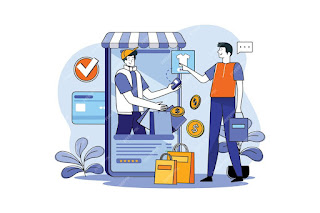Building Your Own Online P2P Marketplace in 2024
In the digital age, online marketplaces have revolutionized buying, selling, and trading goods and services. Peer-to-peer marketplaces, in particular, have gained immense popularity, empowering individuals to connect directly for transactions without intermediaries. Whether you're envisioning the next Airbnb, Etsy, or Uber, creating your P2P marketplace can be a transformative experience.
At the forefront of this technological wave stands Code Brew Labs, known for its innovative solutions in the digital realm. To delve into the process of building your own P2P marketplace in 2024, let's explore the essential steps and considerations:
Understanding the P2P Marketplace Model
A Peer-to-peer marketplace enables users to engage directly with one another for transactions, whether it's renting accommodations, selling handmade crafts, or offering freelance services. This model eliminates the need for intermediaries, fosters a sense of community, and facilitates seamless transactions.
Identifying the Market Need
Before diving into development, conducting thorough market research is paramount. Identify your target audience, understand their pain points, and analyze your competitors. Recognizing market gaps will guide your platform's unique selling proposition (USP).
Defining Your Platform's MVP
Crafting a Minimum Viable Product (MVP) is the initial step. Outline the core features essential for your platform's functionality: user registration, listings, search, secure payment gateways, messaging systems, and review mechanisms.
Choosing the Right Technology Stack
Selecting the appropriate technology stack is crucial for scalability, security, and user experience. Options like React, Django, and Laravel, or cloud services such as AWS or Google Cloud, can power your platform effectively.
Design and User Experience (UX)
A visually appealing and user-friendly design is crucial. Prioritize UX by creating wireframes and prototypes. Ensure a responsive design that is adaptable to various devices, enhancing accessibility
Development Process
Initiate development by setting up infrastructure, databases, and server-side architecture. Implement user authentication, profile creation, listing functionalities, and secure payment gateways. Rigorous testing during development is essential.
Security Measures
Prioritize user data security. Incorporate SSL certificates, encryption protocols, and robust authentication methods. Regular security audits are necessary to identify and mitigate vulnerabilities.
Testing and Quality Assurance
Conduct comprehensive testing across different platforms and devices to ensure functionality and compatibility. Usability tests, functional assessments, and performance checks are crucial. Address bugs and optimize performance for a seamless user experience.
Launch and Marketing Strategy
Before launch, devise a robust marketing strategy. Utilize social media, content marketing, SEO, and targeted advertising to generate interest. Offering incentives or promotions can attract early users to the platform.
Gathering User Feedback and Iteration
Post-launch, gather user feedback diligently. Monitor user behavior, collect reviews, and analyze usage patterns. Use this data to improve existing features and introduce new ones to enhance the user experience.
Scaling the Platform
Prepare for scalability as your user base grows. Optimize servers, databases, and the codebase to handle increased traffic. Continuous monitoring and swift action to address scalability issues are crucial.
Legal and Regulatory Compliance
Ensure compliance with legal regulations concerning user data, transactions, taxes, and industry-specific guidelines. Consulting legal experts to draft terms of service, privacy policies, and disclaimers is essential.
Community Building
Foster a sense of community among users. Encourage interactions, facilitate discussions, and allow users to share their experiences. Engaged users often contribute immensely to the marketplace's growth and sustainability.
Building your P2P marketplace in 2024 demands meticulous planning, dedication, and a user-centric approach. Embracing these steps can lay the foundation for a robust platform that caters to market needs while providing a seamless and engaging user experience.

Comments
Post a Comment